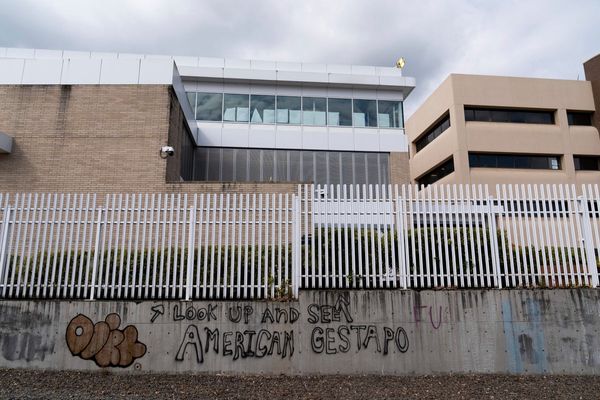Being rebellious by nature made growing up a little harder for David MacMillan. But his free spirit later helped him reach success as a chemist and scientist.
"The trait I've been lucky enough to have is the desire to see if you can do things differently," MacMillan, winner of the 2021 Nobel Prize in Chemistry, told Investor's Business Daily. "It pushes you to do new things."
For MacMillan, coming up with new questions is more important than coming up with new answers. "Once you have questions, you have a solution," he said.
Break The Mold Like MacMillian
Maverick-like thinking sparks MacMillan's inventiveness. It also lights up his urge to take risks. And this combo of traits spurred MacMillan to break new territory in organic chemistry.
It paid off. MacMillan, the James S. McDonnell Distinguished University Professor of Chemistry at Princeton University, and Benjamin List of the Max-Planck-Institut fur Kohlenforschung, Mulheim and der Ruhr, Germany, won the 2021 Nobel Prize in Chemistry. They earned the award for developing a new tool for molecular construction: asymmetric organocatalysis.
In developing asymmetric organocatalysis, MacMillan and List changed the landscape for molecular construction. The advantages are profound in how new drugs and materials are made.
Prior to 2000, there were two main types of asymmetric catalysis, a way to speed up a chemical reaction. There was biocatalysis (which uses complex enzymes) and metal catalysis. MacMillan and List found a third major mode of catalysis called asymmetric organocatalysis.
Organocatalysis is more environmentally friendly than the other methods. It uses small organic molecules to drive chemical reactions.
"This has had a great impact on pharmaceutical research, and has made chemistry greener," the Royal Swedish Academy of Sciences noted on Oct. 6, 2021 in announcing the award.
"Their impact is immeasurable, reaching from industrial applications to pharmaceuticals to everyday products like clothing," said Princeton's statement announcing MacMillan's win.
Take Risks Like MacMillan
MacMillan's urge to take risks and question current practices drives his innovative thinking.
He didn't just pioneer asymmetric organocatalysis. MacMillan also introduced a new form of catalysis that combines organocatalysis with visible light. This new catalytic mode, termed photoredox catalysis, also matured into an important field of research.
For his achievements, MacMillan received another distinctive accolade honoring his work in chemistry after winning the Nobel Prize. On June 1, 2022, Queen Elizabeth II named MacMillan, who has a dual U.S.-U.K. citizenship, Knight Bachelor. She cited his "exceptional and sustained contribution to chemistry and science."
Be Practical Too
MacMillan is inquisitive. But he's also practical.
Starting off working with metal, previously the primary driver of chemical catalysis, MacMillan saw problems. Metals can be expensive to mine. They're also difficult to work with and not sustainable for long-term use.
Then a light bulb went on.
"I became fixated with the idea that there are other ways of doing catalysis," he said. "I decided to use the organic molecules of life because they're abundant, cheap and biodegradable. If we can make catalysts from organic molecules it can be sustainable and put back into the life cycle. "
MacMillan set out to prove his theory with warp speed.
"(MacMillan) is always able to simplify what are very complex problems or issues into their basic components and boil them down into what's most important," Michael Rabinowitz, an organic chemist and MacMillan's friend, told Investor's Business Daily.
MacMillan is also uncompromising in his vision, Rabinowitz says. "He simply has an idea about how things should be done and that's the way he wants them done," he said.
Be Patient Like MacMillan
MacMillan's path to winning the Nobel Prize took years. He was a first-year professor at the University of California at Berkeley when he first made the discovery in 1999 for which he won the Nobel Prize.
"What we (he and the graduate students who comprised his lab) did was develop the concept that it would work not just for one reaction, but for hundreds of different reactions," he said.
Their experiment to prove this concept worked. The first day MacMillan and the grad students did the experiment using organic molecules, "remarkably, it worked almost immediately," he said. "It was kind of stunning."
The response from the research communities was beyond MacMillan's expectations. "I had no idea the way it would take off as a whole area of research with thousands of people all over the world involved in this kind of catalysis," said MacMillan, now 54.
Forge Your Path Like MacMillan
MacMillan's path to be a scientist and a chemist started while growing up in Bellshill, Scotland. His older brother Iain went to university, something no one in his village had done, he says.
But his brother's experience proved the value of a college education. After he graduated with a degree in physics, he got a job that paid more than his dad's job, where he was a steelworker for 30 years.
"It was a big shock to everyone in the family," said MacMillan.
His brother's experience also had strong implications for MacMillan's future. It prompted his mother to insist that MacMillan go to college too. In addition, he was told to follow in Iain's footsteps and study physics.
Then came the rude awakening: "I hated physics," said MacMillan. "So I started an organic chemistry class, and the fireworks went off. It was love at first sight."
Love What You Do
That love of his work helped motivate MacMillan to pursue his career as a scientist and chemist.
He earned his undergraduate degree in chemistry from the University of Glasgow in 1991. Then he made the bold move to study in the U.S. That's where he saw new opportunities.
In 1990, he began his doctoral studies at the University of California at Irvine. Then he undertook a postdoctoral position at Harvard in 1996. He started his career as a faculty researcher at UC Berkeley in 1998 before moving to the California Institute of Technology in 2000.
In 2006, he moved to Princeton as the A. Barton Hepburn Professor of Chemistry. He served as department chair from 2010 to 2015. He leads a research group focused on the pursuit of new concepts in catalysis.
Show Others The Value Of Their Work
MacMillan makes a point to show his team the benefits of their work as motivation. How? He asks them to "think about what you're doing. We're working on a problem that's going to have (an) impact.'"
He says the motivation for students to innovate is their knowing these discoveries are going to get used.
"I just highlight to the students how valuable they are to society," he said.
Four years after he arrived at Princeton, he took over as department chair. He is highly influential in recruiting a strong faculty team. He also spearheaded opening a world-class chemistry building, Frick Laboratory. He's turned the department into one of the country's top places to study chemistry.
The department's success is a team effort, he said.
"It's not about being leaders. It's being a team of leaders and getting a faculty that's the best of the world, who want people to succeed," he said. "You build a department filled with key people who care about what they're doing, people who genuinely care about building a great department and community."
David MacMillan's Keys
- Winner of the 2021 Nobel Prize in Chemistry and professor of chemistry at Princeton University. His tool for molecular construction has a great impact on pharmaceutical research.
- Overcame: The risks of treading on new territory in chemistry.
- Lesson: "You're going to have failures. But failure is just another word for experience."







